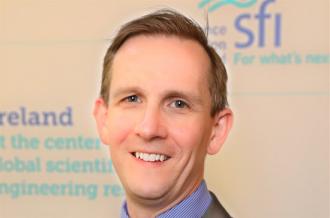How maths can calculate climate change's impact on our sea levels
Toggle
My two collaborators Sarah Woodroffe and Matthew Brain from the University of Durham watch from above and smirk as the look of panic rises in my face and I realise the only tool I have to get myself out of this hole is the spade in my hand. Such is the life of a sea level scientist. I start digging myself out of a hole.
Matt and Sarah choose to spend their days slowly sinking in a saltmarsh as an alternative to the sleek and comfy office where I would much rather spend my time coding and drinking nice coffee. They travel the world digging into the ground in these dangerous coastal environments and looking for markers of sea level change. In the sediments they extract from the ground, they look for tiny organisms, long since dead, which will tell us how our coastlines have changed and evolved.
I rarely venture out on these escapades, but the painstaking research that Matt, Sarah, and others conduct to collect these data involves extracting it, counting it, recording it, and eventually transferring it to my research group at the Hamilton Institute in Maynooth University. All these steps are necessary if we want to find out what is happening to the sea levels around our coasts.
They spend many years learning just how to collect the right data from the right spots, and to take extremely careful GPS-based measurements of sea level height. My job is to take the glory by calculating the rate at which sea level is rising. Going out into "the field" (or, in truth, the mud pit) with them is what reminds me that these data are real and the consequences of this rise are serious.
How do you calculate a rate of change? Many people might remember the "up over across" rule from their school mathematics. Those who have studied maths at a higher level will have come across calculus, a means of calculating instantaneous rates of change. Unfortunately even that method doesn’t help too much here, as the sea level data is not a simple curve but clouded by uncertainty. We have to work out how the organisms relate to the tides, and how old they are using radiocarbon dating methods.
My team have spent many years trying to get these calculations right. Our latest work borrows methods from machine learning and artificial intelligence to take account of the especially large volumes of data now being produced. This has enabled scientists to estimate rates of sea level change across the world that take into account the multiple sources of uncertainty and report results with uncertainties.
Whilst the single sea level rate figures might attract the headlines, science does not work with certainties and they are always wrong. Without the uncertainty in a value, we just don’t know anything about it. If two scientists were to compare their rates with only single values, they would have no means of settling their disagreement. Uncertainty allows for the compromise that lets science move forward.
My journey into the mud took place in possibly the least exotic place you can be, though other locations are far more alluring. Professor Andy Kemp of Tufts University spends his time in a mud bath of his own making just on the edge of New York City. This is a fascinating place to work, being an area where the sea and human life come into close conflict. A recent report put the value of the infrastructure on Manhattan Island below one metre above current sea level at over $25 billion US dollars.
Using his data and our maths, we now know that sea level is rising there at about 3mm per year. That seems to give us plenty of time to adapt before that infrastructure comes under threat, but possibly much less if this rate continues to rise, or if the tidal range increases with the sea level, which it often does. If the global rate hits 5 or more mm per year, parts of Manhattan will be under severe threat well within the current century.
READ: Here's how climate change is damaging one small Pacific island
The next challenge for my group is to work out rates of global and local sea level acceleration; the rate at which sea level rise is increasing. New projects in Ireland to measure this, such as the A4 project (Aigéin, Aeráid, & athrú Atlantaigh) funded by the Marine Institute and led by the ICARUS Climate Research Centre and Department of Geography at Maynooth University, are underway. We have an opportunity to get Ireland out of the mud and into the forefront of worldwide climate impact research.
